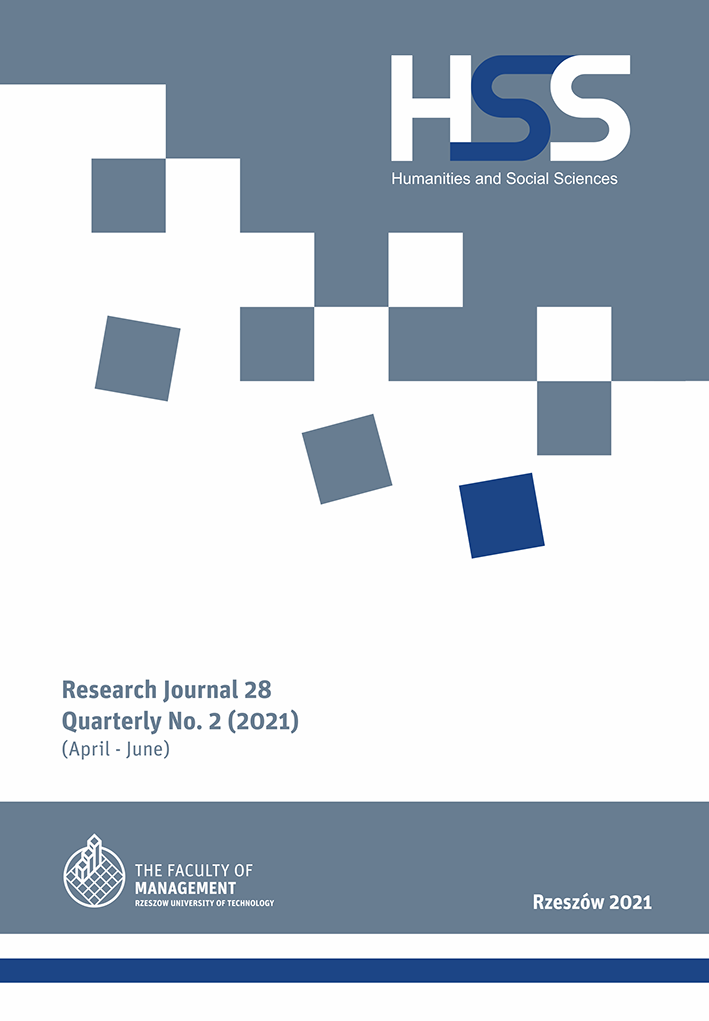Abstract
This paper reports on a part of a broader and more comprehensive research study (i.e., research designed to answer additional research questions and requiring additional research methods to be employed than those reported herein) carried out from May 2017 to January 2019 and aimed at determining the impact of the Experience Use System3 on the operational capabilities, organizational culture, and approaches to knowledge management in the Polish Armed Forces. To carry out this part of the research, a survey was administered to professional soldiers and employees of the Ministry of National Defence, and the goal of the research was to determine "how much of the information needed to perform your duties do you have in your head." This study is based on the findings of independent investigations by Stephen Hawking of Cambridge University, Nick Bontis of McMaster University, and Robert Kelley of Carnegie-Mellon University.
References
Babbie, E. (2007). Social research in practice. (Badania społeczne w praktyce). Warszawa: Wydawnictwo Naukowe PWN.
Bednarek, A. (2019). “IQ falls from generation to generation”. This is nothing new – old research has been refreshed. (“IQ spada z pokolenie na pokolenie”. To nic nowego –odświeżono stare badania) [Access: 18.10.2019]. Access on the internet: tech.wp.pl/iq-spada-z-pokolenie-na-pokolenie-to-nic-nowego-odswiezono-stare-badania6385495623407745a
Bielecka, A. (2011). Statistics for managers. Theory and practice. (Statystyka dla menedżerów. Teoria i praktyka). Warszawa: Oficyna Wolters Kluwer Business.
Bontis, N. (2001). Assessing knowledge assets: a review of the models used to measure intellectual capital. “International Journal of Management Reviews”. Vol. 3 Issue: 1 2001.
Davenport, T. H. (2005). Thinking for a Living: How to get better performance and results from knowledge workers. Boston-Massachusetts: Harvard Business School Press.
Elliman, T., Eatock, T., Spencer, N. (2005). Modelling knowledge worker behaviour in business process studies. “Journal of Enterprise Information Management”. Vol. 18 Issue: 1. DOI: 10.1108/17410390510571501.
Goleman, D. (2007). Business intelligence (Inteligencja biznesowa). J. Witecka (edit.). Business volume 1, Company management part 1. (Biznes t. 1, Zarządzanie firmą cz. 1). Warszawa: Wydawnictwo Naukowe PWN.
Grygiel, B. (2019). IQ of humanity is falling. Up to 7 points per generation. (Spada IQ ludzkości. Nawet o 7 punktów na pokolenie) [Access: 18.10.2019]. Access on the internet: www.focus.pl/artykul/spada-iq-ludzkosci-to-bardzo-niepokojace-180613122741
Hawking, S. (2002). The Universe in a Nutshell. (Wszechświat w skorupce orzecha). Poznań. Zysk i S-ka.
Kołodziej, A. (2013). Theory of estimation in the practice of social research. (Teoria estymacji w praktyce badań społecznych). Warszawa: Difin.
Kozubal, M. (2017). Civilian army employees are pariahs of the Ministry of Defense. (Cywilni pracownicy wojska to pariasi resortu obrony). „Rzeczypospolita” [Access: 29.05.2017]. Access on the internet: www.rp.pl/Sluzby-mundurowe/305289919-Cywilni-pracownicywojska-to-pariasi-resortu-obrony.html
Latiff, R., H. (2018). Future War: Preparing for the New Global Battlefield, (Wojna przyszłości. W obliczu nowego globalnego pola bitwy). Warszawa: PWN.
Sobczyk, M. (2000). Statystyka. Warszawa: Wydawnictwo Naukowe PWN.
Zięba, A. (2012). Surveys, parameter estimation, minimum sample size. (Badania sondażowe, estymacja parametrów, minimalna liczebność próby). Warszawa: Wydawnictwo Szkoły Głównej Handlowej [Access: 10.01.2019]. Access on the internet: https://www.e-sgh.pl/niezbednik/plik.php?id=7202&pid=715


